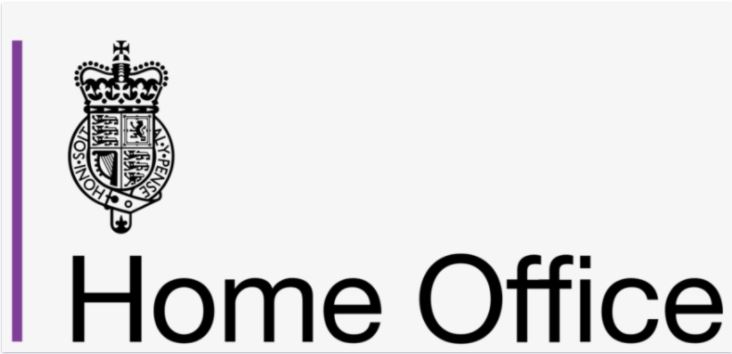ESN official hints at potentially costly new timeline for UK public-safety broadband project
A plan submitted seven months ago that called for UK public safety to transition mission-critical voice communications from the Airwave TETRA system to the LTE-based Emergency Services Network (ESN) in 2024 or 2025 was “overambitious” and is being revamped, according to the UK director heading the project.
ESN Programme Director John Black did not specify dates when UK first responders are expected to abandon Airwave—the expensive nationwide TETRA network—and operate on the much-delayed ESN, but he clearly indicated that the new business plan anticipates a slower deployment than was anticipated less than a year ago.
“The next big thing we have to get done is the full business case,” Black said yesterday during the opening session of BAPCO: The Online Event. “We pushed out a version of the business case last August which didn’t get agreement and support, because it was overambitious, frankly—it was an attempt to be more ambitious with the timescales, but it wasn’t backed up or supported with good plans.
“So, we are reissuing that—we hope by the end of March … That will contain more details on where we think both the financial case and the timescales are going.”
At the heart of being able to replace Airwave is the evolution of push-to-talk-over-LTE technology being developed by Kodiak—a PTT unit of Motorola Solutions, which also is projected to be paid more than $600 million annually for each year that Airwave is used beyond December 2022.
Black emphasized the importance of Kodiak developing its next two PTT software releases, noting that only after the second release—known as ESN 1.0, following ESN Beta—would he expect first responders to consider switching to the LTE-based product for mission-critical voice communications.
“The next release will be due out early next year—ESN Beta,” Black said. “And then, the release we all want—ESN 1.0, which is the release we need, because it has all of the functions we need to manage the mass transition and rollout—we don’t have a date for that yet. Obviously, it will be after the ESN Beta release. We are working right now to ensure that we get you a date for that as soon as possible.
“We are trying to get as much certainty as we can, but I want to be really confident that, when we put out a date that it’s a good date … Currently, we believe we’ll have the ESN 1.0 date around about the end of March or the beginning of April. And by mid-year, we should have a much better overall program plan—developed in collaboration with the senior users on the program—hopefully will give us all a good basis for our planning.”
Kodiak typically releases a new version of its software every 9 to 12 months, according to Black. If Kodiak were to maintain this pace with the next two software releases, UK first responders likely would not be able to begin trialing ESN 1.0 until early in 2023.
UK officials initially planned to begin migrating first-responder communications to LTE as early as 2016, with the ESN completely replacing TETRA when the original Airwave contract expired in 2019. But the ESN was far from ready at that point, so the UK Home Office signed a three-year extension in September 2018 with Motorola Solutions to keep the Airwave system running through at least 2022.
Home Office Permanent Secretary Matthew Rycroft told members of the UK Parliament’s Public Accounts Committee during a hearing last September that the goal was to “turn it [Airwave] off by the beginning of 2024” while noting that “the absolute latest that we could turn Airwave off is 2025.”
Any further Airwave extension would be subject to commercial negotiations with Motorola Solutions, but correspondence from Rycroft to the Public Accounts Committee indicated that such a deal likely would cost the Home Office more than £400 million ($558 million) per year and is “rising with inflation.” Including the expense of replacement radios and other associated items causes the overall total cost of an Airwave extension to increase even more.
“Subject to commercial negotiation, the annual cost of extending Airwave beyond December 2022 is likely to be in excess of £450m [$628 million], taking into account local Airwave costs,” Rycroft stated in his fall correspondence to Public Accounts Committee Chair Meg Hillier, who requested clarifications after the September hearing.
“The annual cost of delay to the ESN programme is likely to be in excess of £650m [$907 million], accounting for any assumed Airwave extension (which is subject to commercial negotiation), programme costs and the cost of delayed benefits realisation.”
With the hefty costs associated with extensions to the existing TETRA system, Black stressed the need to focus all ESN efforts on ensuring the shutdown of Airwave as soon as possible.
Black—a longtime IBM employee who joined the ESN as CTO in July 2020 and was named program director a month later—reiterated the Home Office commitment to making the ESN vision a reality, noting that an independent review of the project “absolutely revalidated that we’re on the right track here.”
“First, [TETRA] is a technology that’s coming to the end of life that has no real data capability and cannot be the basis of integrated voice and data solutions of the future,” Black said during his BAPCO presentation. “Secondly, it’s a bespoke network that’s extremely expensive to run.
“We’re confident that we’re on the right track. We’re also confident that the rest of the world is with us, having been around in the last two or three months and validated what other countries and organizations are doing. They’re all now getting on the track of, ‘We need to get into 4G LTE as the basis of critical emergency-services communications.’”
Black noted that there has been considerable development success in some “core” areas, such as the establishment of data centers, LMR interoperability, a successful test of connectivity with airborne vehicles, and “really good progress” with control rooms.
Black stressed the need for ESN to earn the confidence of first responders.
“What we really want to do—as soon as we can, come April—is start to distribute some of those 5,000 Samsung XCover Field Pro devices, get them into the hands of officers in all of the emergency services, and start to get some real-world experience and feedback to build the confidence that this solution works,” Black said.
“We know have the right solution; we just need to demonstrate that to everyone.”
But the Samsung XCover Field Pro—a ruggedized LTE handset that also is the flagship device for the FirstNet PTT service in the U.S.—is not expected to be utilized when the ESN is fully deployed, according to Black.
“We have another device that we’re talking about procuring right now,” he said. “The current device—the one we’ll push out in April—will be end of life before we’re through the rollout. So, we have another device that we’re discussing right now, and we’re planning a procurement on a non-rugged device, as well.
“We’re also looking at device-to-device [direct mode] possibilities, including whether there’s a possibility of reusing Airwave sets or other specially built devices.”
While most of the 4G network coverage for the ESN is complete—provided by UK-based commercial wireless carrier EE—there is still a notable amount of work to be done in terms of building new cell sites to address the expanded coverage needs of first responders, Black said.
“We have something like 1,100 masts in total to build. Just under half of those are done already—430 new EE masts are already active,” Black said. “We have quite a way to go, but we are making really good progress with the masts.’
And that expanded EE coverage already is having an impact on public safety, as EE reports that the new cell sites are supporting about 200 emergency calls per month to the 999 system that otherwise would not have been connected with the carrier’s pre-ESN footprint, Black said.


















Lessons in being over ambitious, contracting & procurement should have been learnt during the Airwave rollout. God knows they were told enough times about it from 1995 onwards. The rushed moved from Airwave to ESN was purely political under the banner of ‘anything but Airwave’. Yes, Airwave was expensive, but the Gov of the day were warned of this and chose to ignore it. The whole sorry story of ESN from late 2013 onwards has been a lesson in how never to conduct a programme. The lack of personal responsibility & accountability from the top down and greed of outsourced consultancy organisations is astounding
Excellent article! As a founding member of the Project 25 Steering Committee, I followed the near parallel rollout of P25 & TETRA, in-fact attending and speaking at the first several TETRA World Congress gatherings. I look forward to joining them again later this year at their anniversary celebration! As APCO Intl President in 1993, it was my greatest pleasure (especially with my English/Northern Ireland heritage) to welcomed British APCO (BAPCO) as our first transoceanic (then) chapter. With many European/UK friends built across those early APCO/P25/TETRA years, we moved forward to the joint EU/US Project MESA that was unfortunately about a decade ahead of its time with technology, but convinced all of us that joint standards development was not only possible, but highly desirable with significant economic and operational benefits. Ultimately we arrived at the global 3GPP First Responder/PPDR standards development effort about a decade ago leading us to today’s 4G/5G LTE rollouts, with our global responder communities taking the lead in defining the Statement of Requirements that those standards were developed to support. But when it came time to implement, we diverged though I need to emphasize that the UK’s specific need to quickly replace Airwave certainly placed much tighter Mission Critical Voice requirements on their system whereas we in the States generally looked at FirstNet as the data side of our house with legacy LMR MVC systems generally remaining operational. That said, as I told tonight’s RCA Member Roundtable on FirstNet, the buildout philosophy in the States has been a private-public partnership out-of-the-park grand slam. With network buildout funded with spectrum auction + other initial Federal government support and part of ongoing AT&T subscriber fees returned to FirstNet for enhancements/management/replacement/support, individual agency participation costs (for non-US readers we have ~18,500 independent & generally individually funded law enforcement agencies alone) are not significantly more than those of their legacy 3G/4G investments. FirstNet is now fully operational in most populated areas, with rural to very rural areas quickly coming online behind them… great job FirstNet and all of those in the public safety world who have supported it along the way!